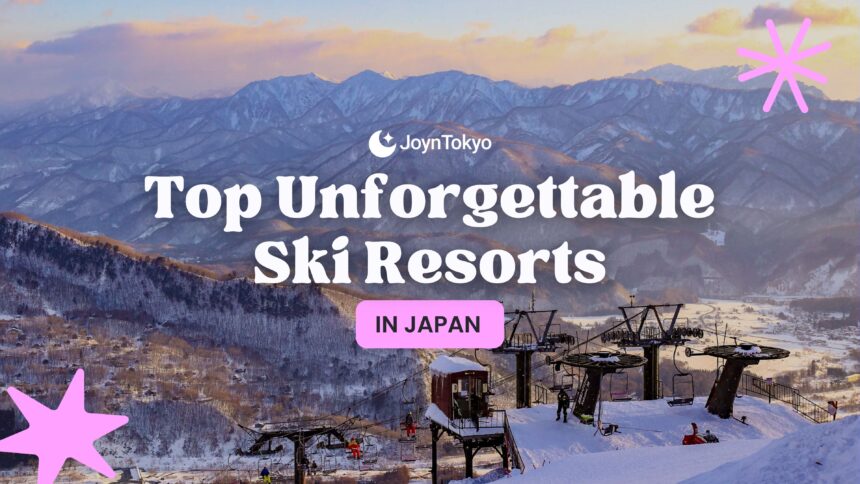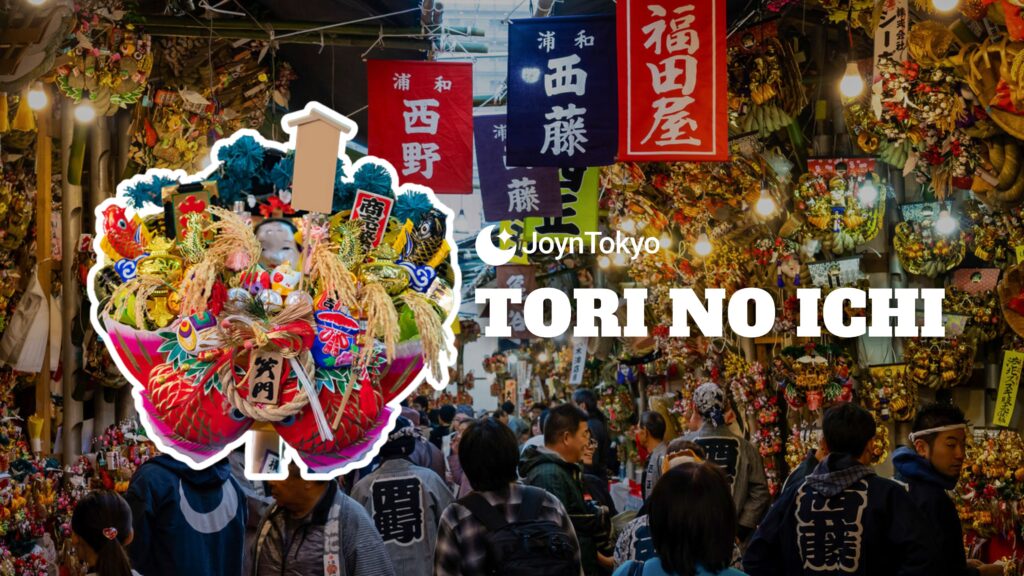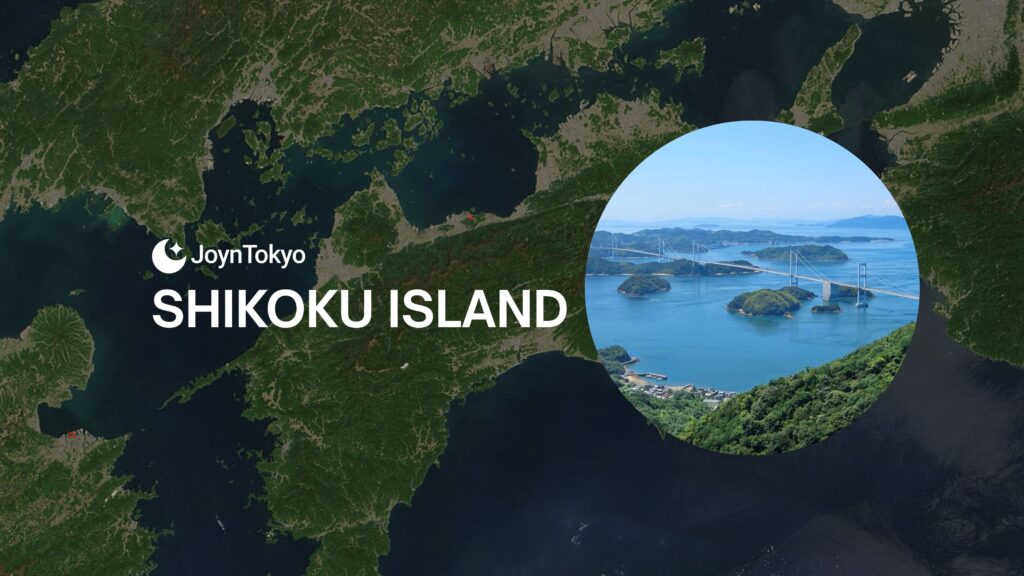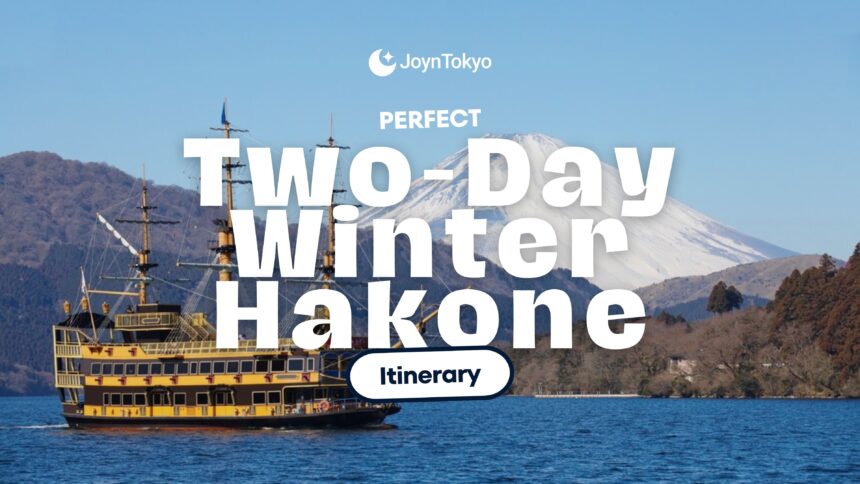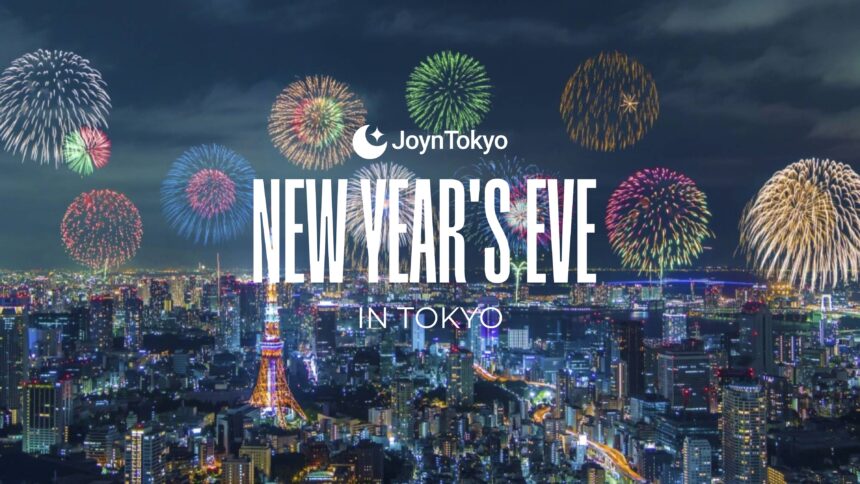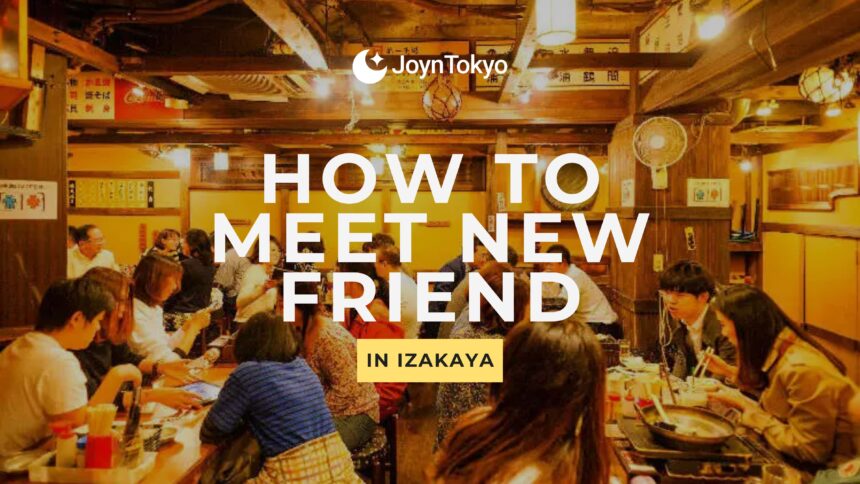Japan’s 2025 ski season promises to be one of the most incredible in recent memory, with deep powder, steamy onsen, and a sense of calm that only a Japanese winter can offer. You can enjoy Hokkaido’s snow-covered wonderlands or the traditional hot spring towns of Nagano, Japan’s slopes offer more than just skiing: they offer an experience.
Here are the top 10 ski resorts in Japan for 2025, each with its own character, highlights, transportation details, and ideal ski season window.
1. Niseko United (Hokkaido)
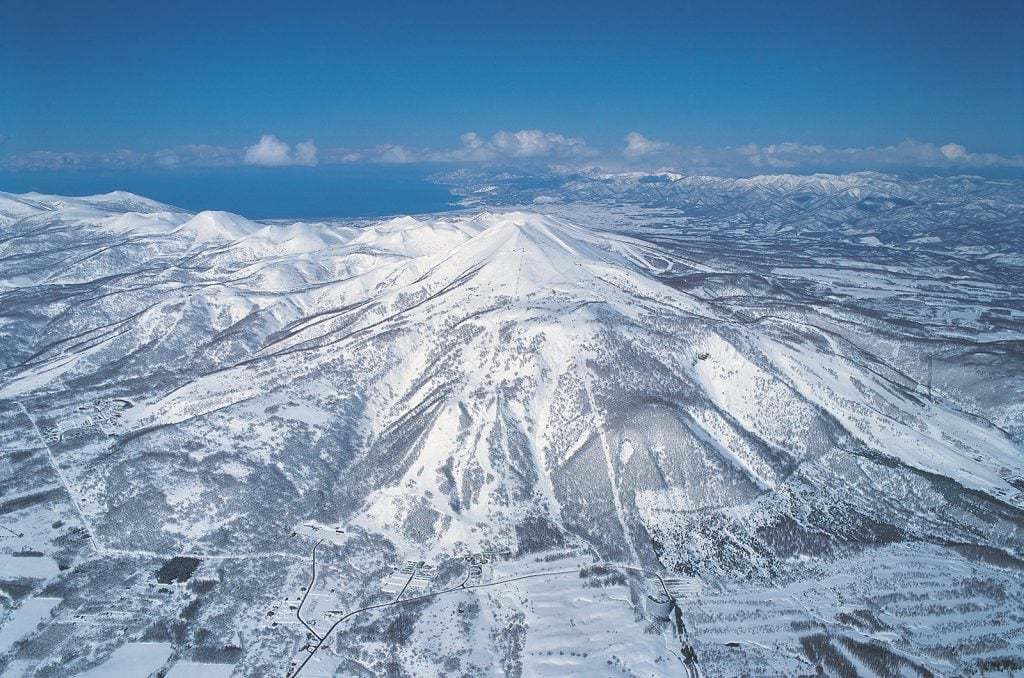
Niseko United is the world’s powder capital. This vast resort combines four connected areas — Grand Hirafu, Hanazono, Niseko Village, and Annupuri — each offering something unique. The snow here is legendary: over 15 meters of ultra-dry powder falls every season. Add in Michelin-starred dining, international ski schools, and natural hot springs with views of Mount Yotei, and you get the ultimate luxury meets adventure destination.
Why it stands out:
Unbeatable powder consistency, global-class amenities, and an atmosphere that fuses Japanese charm with cosmopolitan flair.
Transportation:
Fly into New Chitose Airport (Sapporo), then take a 2.5-hour express bus or private transfer directly to Niseko. Trains via Otaru are also scenic and reliable.
Ski Season:
From early December to early May, Niseko has one of the longest ski seasons in Japan thanks to its northern latitude and consistent snowfall.
2. Hakuba Valley (Nagano)
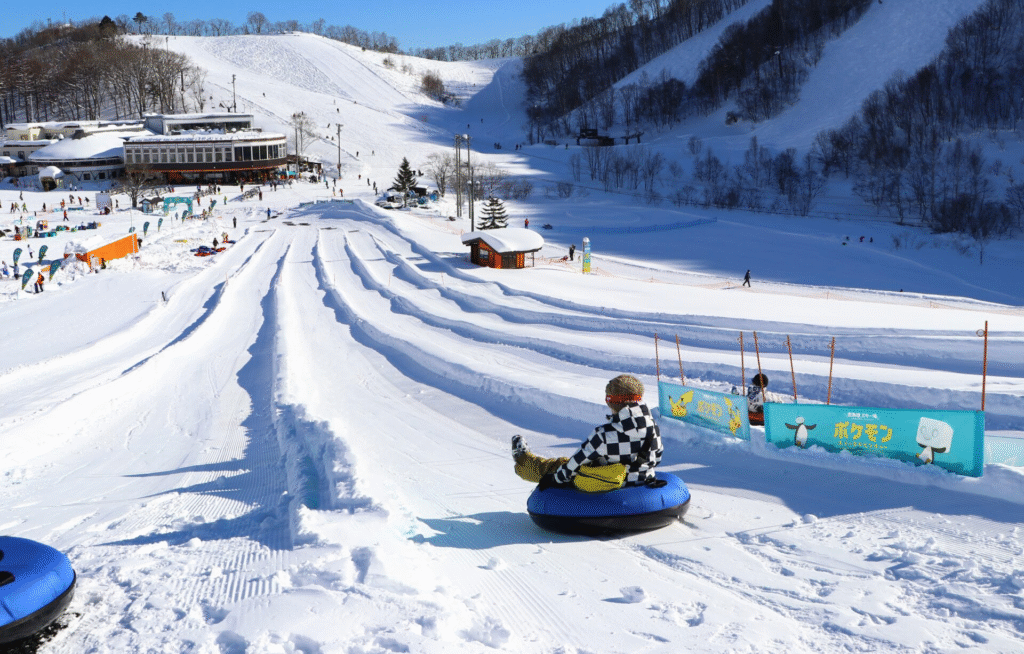
Located deep in the Japanese Alps, Hakuba Valley is both beautiful and bold. With 10 interlinked resorts, this Olympic venue from 1998 offers unmatched terrain variety: gentle slopes for beginners, huge bowls for free riders, and tree runs for powder seekers. The après-ski scene blends mountain charm with Japanese hospitality, rustic izakaya serving local flavors alongside cozy alpine lodges built for comfort and warmth.
Why it stands out:
Hakuba’s Olympic heritage, vast terrain, and lively town make it the best all-round destination for skiers of all levels.
Transportation:
Take the Hokuriku Shinkansen from Tokyo to Nagano (1.5 hours), then a direct bus to Hakuba (one hour). Car rentals are also easy and scenic through the Alps.
Ski Season:
Mid-December to late April, with the deepest snow and best powder conditions from January to February.

You can get a bus ticket and gear together for a cheaper price.
3. Nozawa Onsen (Nagano)
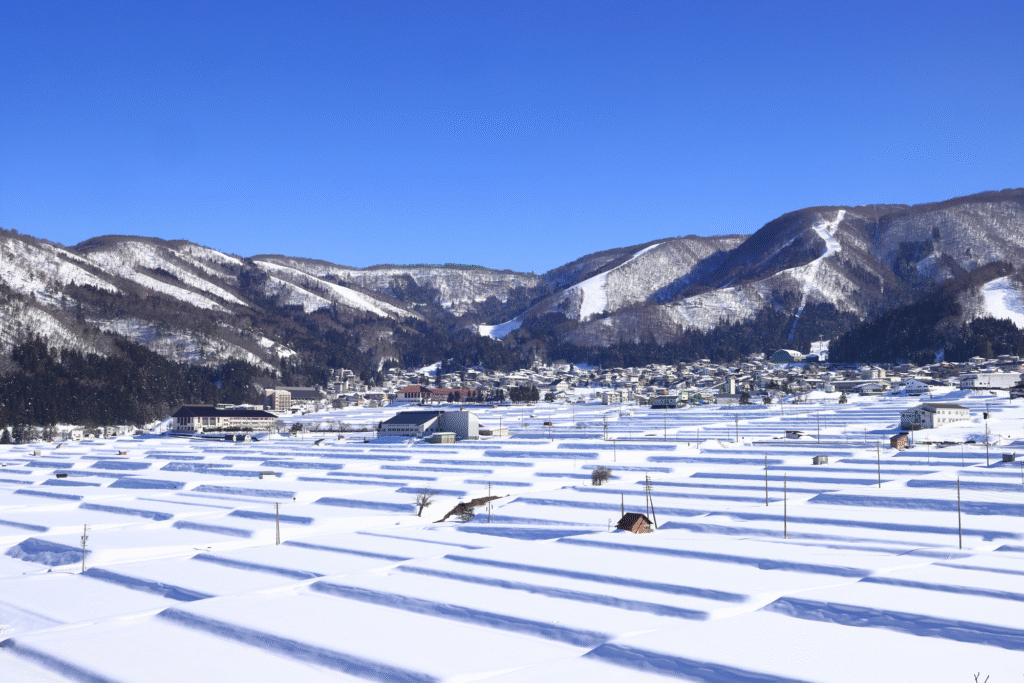
Nozawa Onsen feels like a step back in time. This historic hot spring village, over 1,300 years old, surrounds a top-tier ski area with more than 50 trails. After skiing, soak in one of the 13 free public onsen, stroll lantern-lit streets, and enjoy locally made sake. The Dosojin Fire Festival in mid-January 2025 adds a fiery touch of culture to your visit.
Why it stands out:
Deep cultural roots, naturally healing hot springs, and genuine small-town warmth make it a rare blend of skiing and heritage.
Transportation:
Take the Hokuriku Shinkansen from Tokyo to Iiyama Station (1 hour 45 minutes), then hop on a 20-minute bus to Nozawa village.
Ski Season:
Late December to early April, with ideal snow quality and vibrant cultural events through January and February.
4. Furano (Hokkaido)
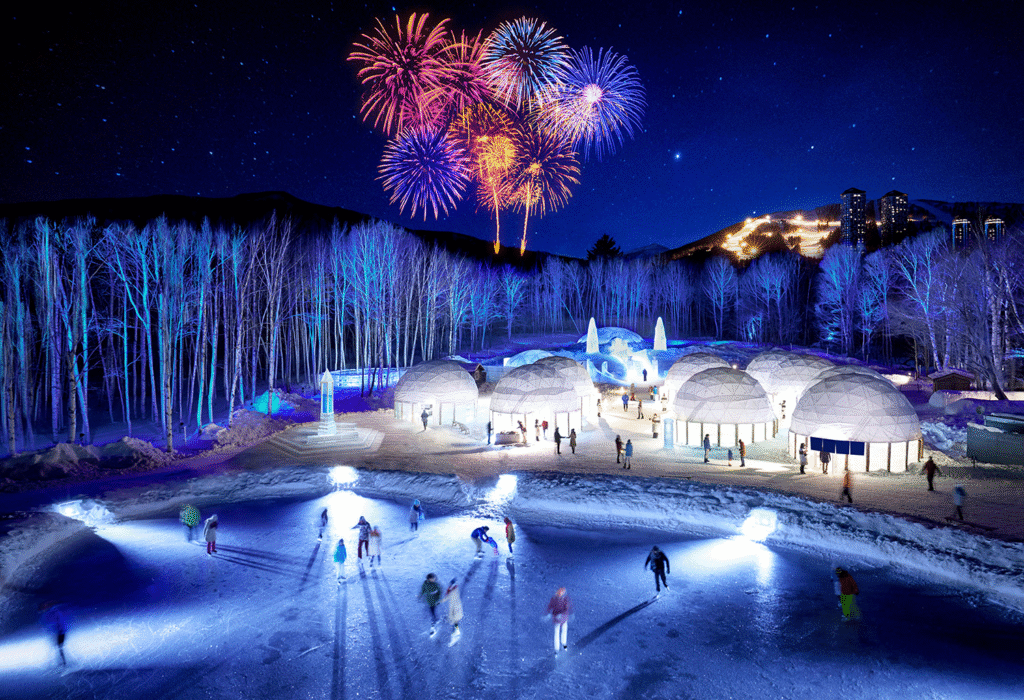
If you dream of fresh snow and quiet slopes, Furano delivers. It’s famous for its light, dry powder and long, uncrowded runs that suit every skill level. The town itself feels warm and authentic, with local cafes, family-run ryokans, and welcoming ski schools. The sunsets over the Tokachi Mountains turn every day on the slopes into something unforgettable.
Why it stands out:
Furano gives you the same quality powder as Niseko — minus the crowds — and a truly local Hokkaido atmosphere.
Transportation:
Fly into New Chitose Airport and take a 2.5-hour train or bus. Alternatively, fly into Asahikawa Airport, just one hour away by shuttle.
Ski Season:
Late November to early April January and February bring the lightest snow and clearest skies.
5. Shiga Kogen (Nagano)
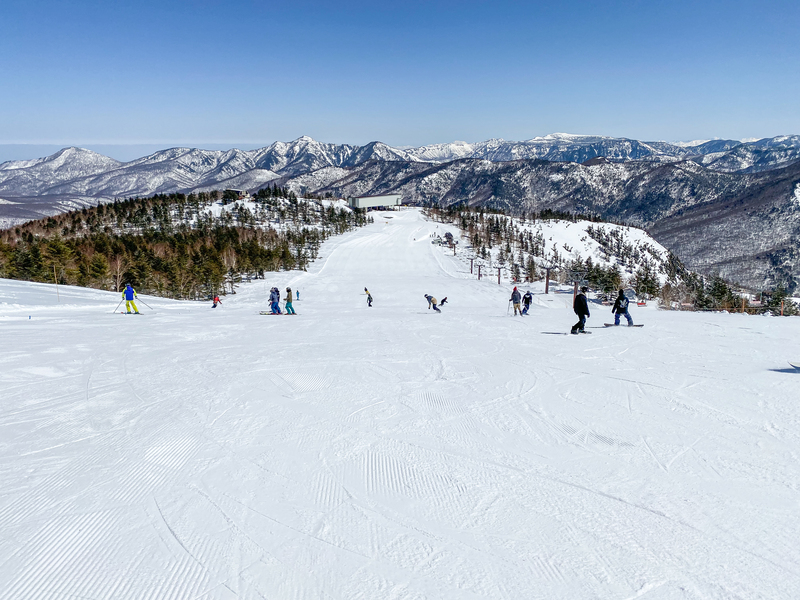
Sprawling across the mountains of Joshinetsu Kogen National Park, Shiga Kogen is Japan’s largest interconnected ski area. With 18 linked resorts, you can ski for days without retracing a single run. High elevation means consistently cold, dry snow. After a full day, visit the nearby Jigokudani Snow Monkey Park, where wild macaques bathe in steaming hot springs.
Why it stands out:
Huge variety, top-quality snow, and the one-of-a-kind experience of skiing near wild snow monkeys.
Transportation:
From Tokyo, take the Shinkansen to Nagano Station (1.5 hours), then the Nagaden bus or train directly to Shiga Kogen (one hour).
Ski Season:
Early December to early May, one of Japan’s longest seasons, with reliable conditions through spring.
6. Kiroro (Hokkaido)
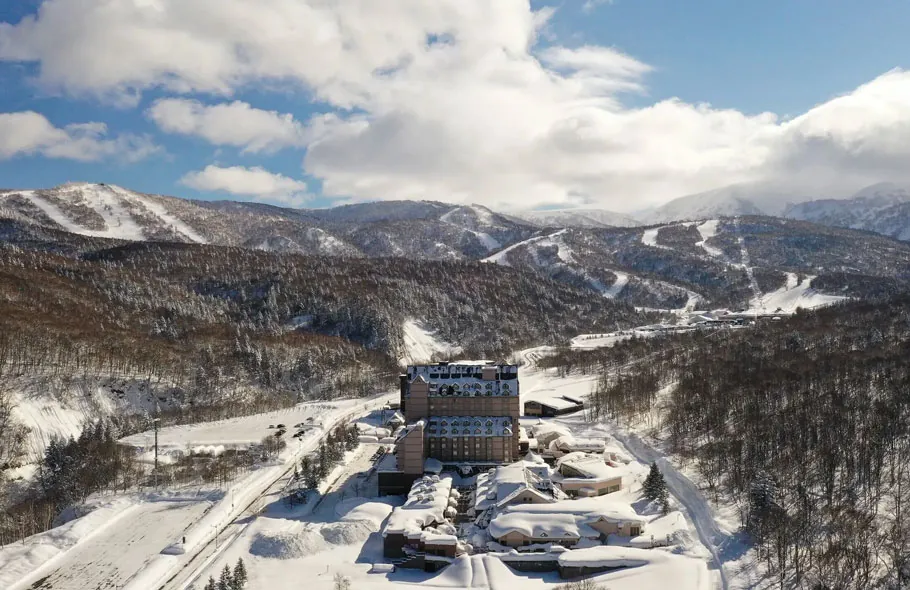
Hidden between Otaru and Sapporo, Kiroro is a luxury escape for those who value deep snow and tranquility. The resort is known for its untouched backcountry, modern design, and incredible service. With luxury hotels — including The Sheraton and Tribute Portfolio — it’s ideal for travelers who want world-class comfort with ski-in/ski-out access.
Why it stands out:
Kiroro offers Niseko-level powder with a quieter, more exclusive feel. It’s where powder hunters and luxury travelers meet.
Transportation:
Only 90 minutes from New Chitose Airport, or one hour by car from Sapporo. Private transfers and hotel shuttles are widely available.
Ski Season:
Late November to late April, with the heaviest powder falling between mid-January and mid-February.
7. Myoko Kogen (Niigata)
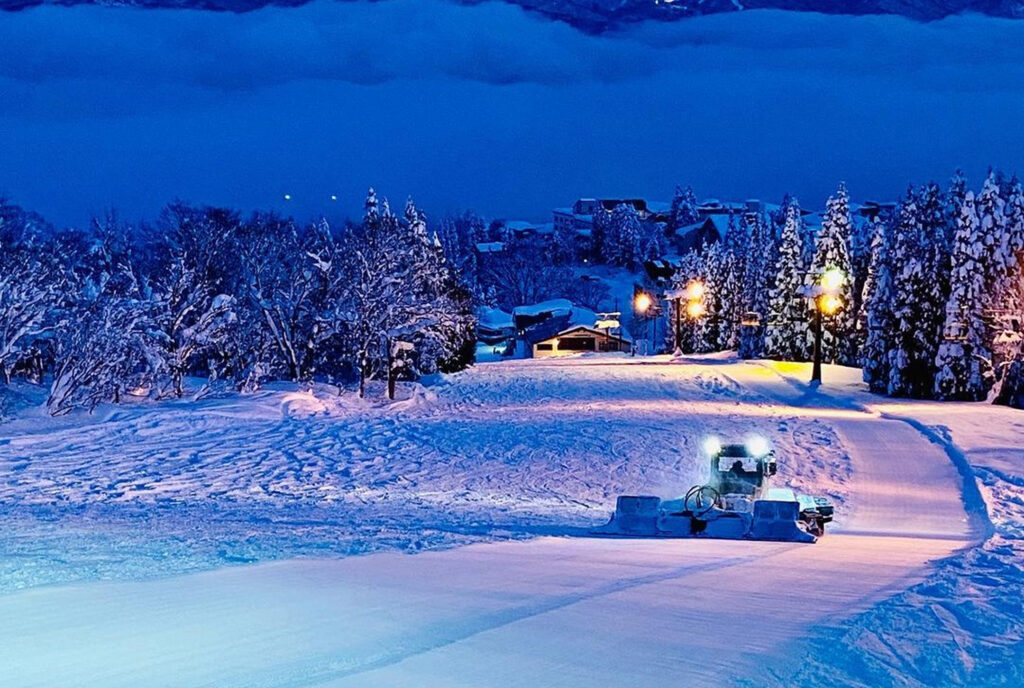
Myoko Kogen is where Japanese tradition meets incredible snow. With several linked resorts — like Akakura, Ikenotaira, and Suginohara — the area gets up to 14 meters of snow annually. You’ll ski long runs surrounded by forest, then unwind in natural onsen baths with a view of Mt. Myoko. The village itself still feels delightfully old-school and welcoming.
Why it stands out:
Myoko’s authentic feel and massive snowfall make it a favorite among serious skiers who crave both depth and culture.
Transportation:
Take the Hokuriku Shinkansen from Tokyo to Myoko-Kogen Station (2 hours), then a short local taxi or shuttle to your lodge.
Ski Season:
Mid-December to early April, with peak snowfalls from January through March.
8. Zao Onsen (Yamagata)
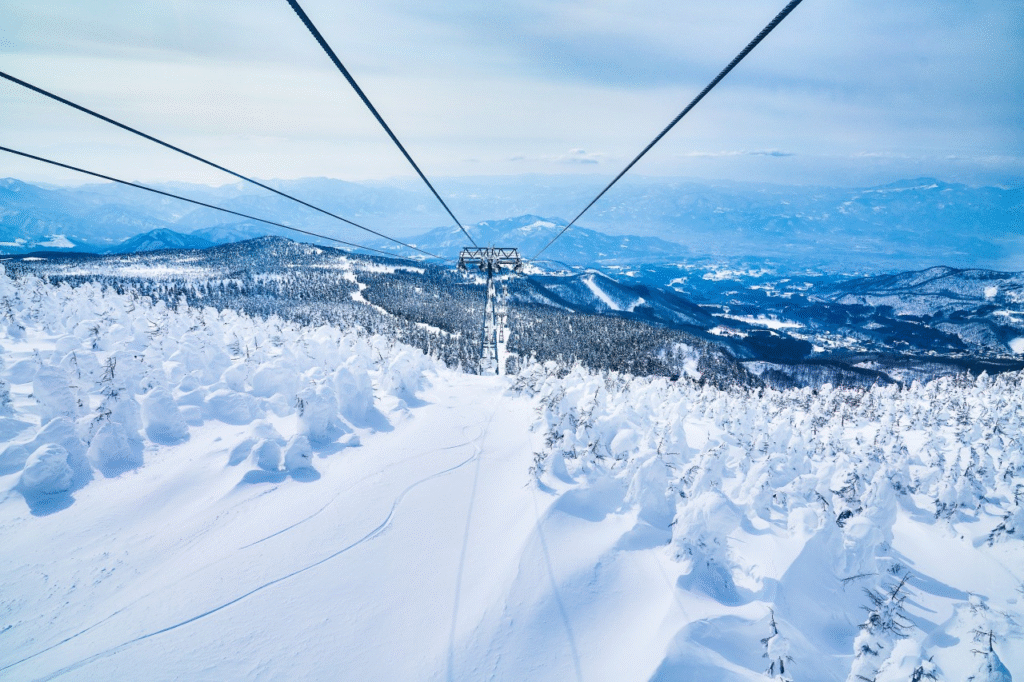
Zao Onsen might be the most photogenic ski resort in Japan. The mountain is famous for its “snow monsters”: frost-covered trees that form magical, glowing figures under night lights. The runs are scenic and family-friendly, and the town’s ancient hot springs offer natural mineral baths that soothe muscles and spirit alike.
Why it stands out:
It’s the only resort in Japan where you can ski through a living forest of “snow monsters” and then bathe in 1,000-year-old onsen.
Transportation:
Take the Yamagata Shinkansen from Tokyo to Yamagata Station (2.5 hours), then a 40-minute bus to Zao village.
Ski Season:
Late December to late March, with snow monsters at their peak between mid-January and mid-February.
9. Appi Kogen (Iwate)
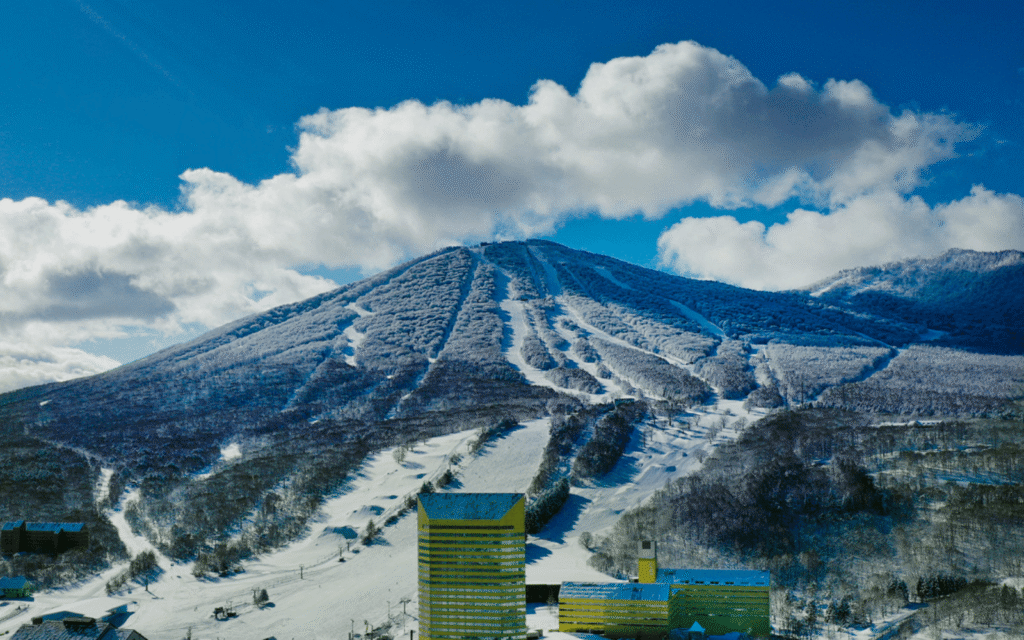
Appi Kogen is sleek, peaceful, and often called the “Aspen of Japan.” Its wide, perfectly groomed runs stretch across the mountains like white ribbons, ideal for intermediate skiers and families. The snow is soft but stable, and the atmosphere feels refined and organized — a rare luxury in Japan’s wilder ski zones.
Why it stands out: Appi is all about precision: perfect grooming, modern facilities, and calm beauty. It’s the ideal spot for relaxed, effortless skiing.
Transportation:
Take the Tohoku Shinkansen from Tokyo to Morioka Station (2.5 hours), then a 50-minute bus or shuttle to the resort.
Ski Season:
Early December to early May, with the best snow between late January and mid-March.
10. Rusutsu Resort (Hokkaido)
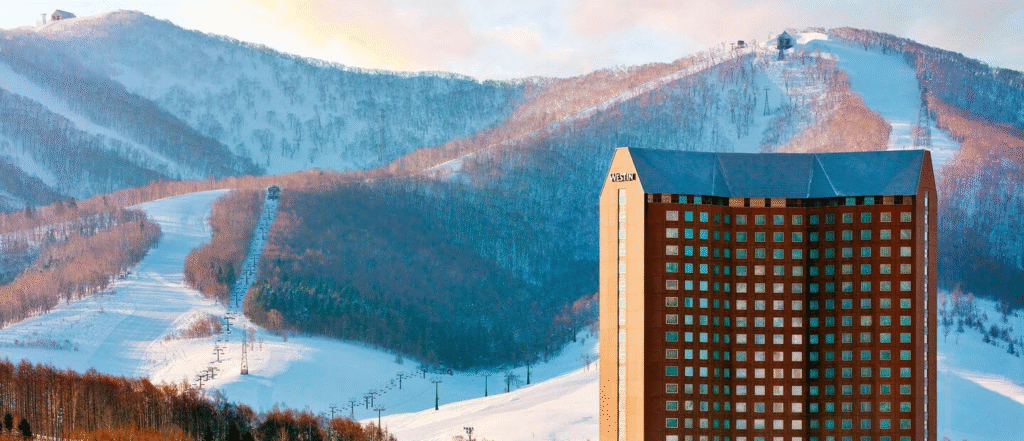
Rusutsu has a little bit of everything: deep powder, family-friendly facilities, and big-mountain thrills. Spread across three mountains (West, East, and Mt. Isola), it rivals Niseko for snow quality but remains less crowded. Add in luxury hotels, an indoor wave pool, and tree-lined night trails, and you have a resort that’s fun for everyone.
Why it stands out:
Rusutsu’s combination of scale, comfort, and consistent powder makes it one of the most balanced ski resorts in Japan.
Transportation:
About 90 minutes by car or shuttle from New Chitose Airport, with direct bus services from Sapporo as well.
Ski Season:
Early December to early April, with the deepest snow between late January and late February.
Best Instagram Photo Spots in Japan’s Ski Resorts
Japan’s ski resorts aren’t just winter playgrounds: they’re visual poetry. The blend of snow, culture, and nature makes every mountain a canvas for your camera. Here’s where to find the most breathtaking, photo-ready moments across Japan’s top ski picture destinations for the Gram:
Niseko United – The Powder Kingdom
- Mount Yotei Sunrise: The view from the Grand Hirafu gondola as the sun lights up the volcano is one of Japan’s most iconic winter shots.
- Night Skiing Lights: Niseko’s glowing night slopes look magical against falling snow.
Nozawa Onsen – Steam, Snow, and Spirit
- Oyu-dori Street: Lanterns glow through rising onsen steam in a classic Japanese winter scene.
- Fire Festival (Jan 15, 2025): A fiery, once-in-a-lifetime moment that’s as intense as it is beautiful.
Zao Onsen – The Realm of Snow Monsters
- Juhyo (Snow Monsters): Photograph them illuminated at night for an eerie, otherworldly shot.
- Zao Ropeway: Bird’s-eye views of the frozen forest landscape.
- Onsen Alley: Steam, lanterns, and icicles, all glowing under soft winter lights.
Planning Your 2025 Japan Ski Trip
For the best experience, visit between mid-January and late February, when snow is deepest and most consistent. Hokkaido offers the driest, fluffiest powder, while Nagano and Niigata combine incredible skiing with rich culture and easy Tokyo access.
Book early, especially for onsen and boutique lodges, as they fill up fast once the snow forecast hits. When you finally sink into a steaming bath after a long ski day, watching the snow fall outside, you’ll understand what makes Japan’s ski resorts so unforgettable: it’s not just the snow. It’s the feeling.

